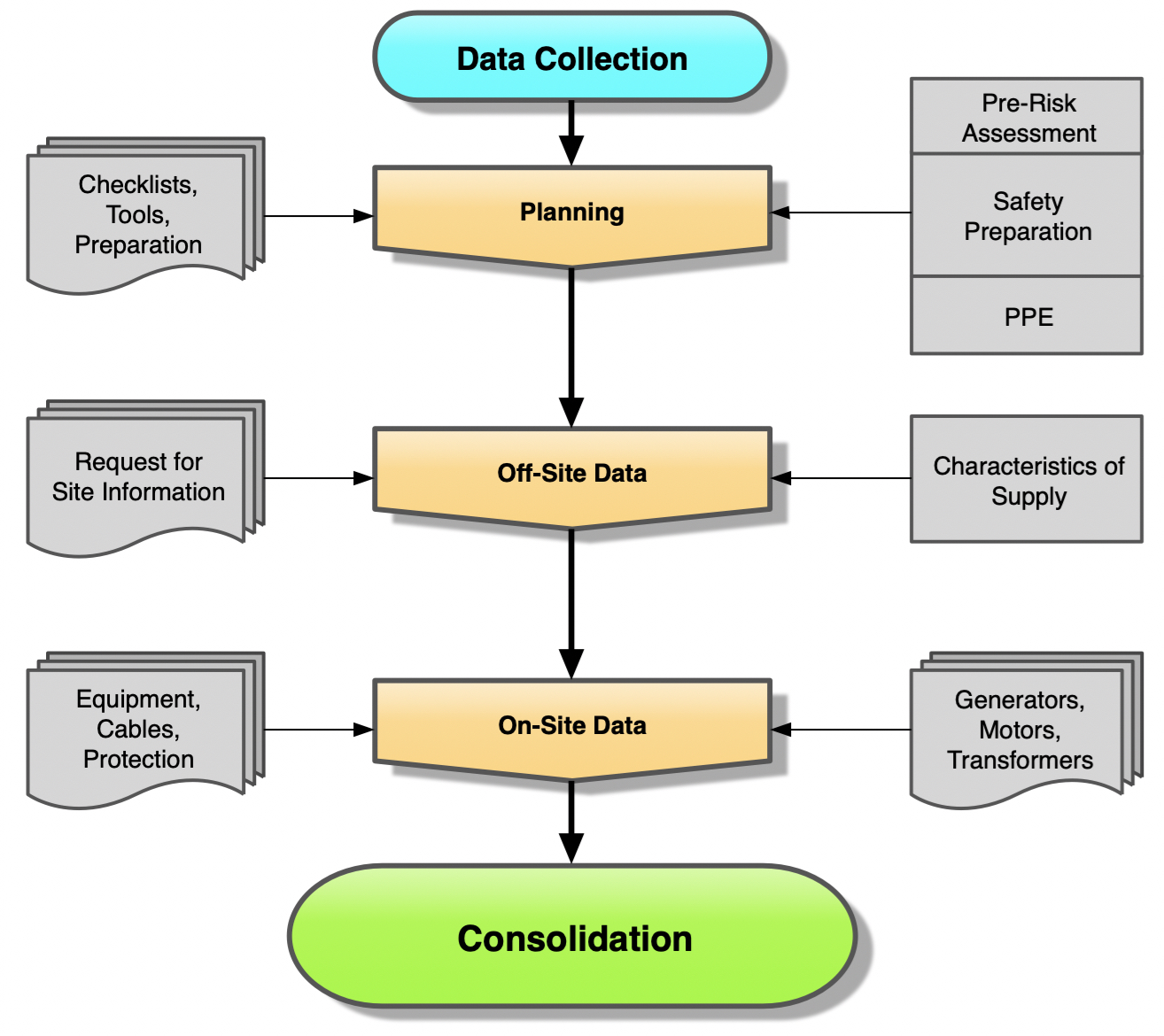Data Collection
Data collection is, without doubt, the most important part of the arc flash risk assessment process. It involves skill, experience and patience as well as a high level of competence. Even if information such as single line diagrams and electrical protection information is already in existence, data collection can take as much as 50% of the effort. I call this the discovery phase as it often feels as though you are a bit of a detective trying to unearth missing pieces of evidence. This chapter is dedicated to the practicalities of collecting data and whilst the following will cover the scope of a complex study of an average commercial/industrial electrical network, the basic principles of acquiring data for a one-off risk assessment still apply.
It is vital that the planning and preparation phase is undertaken with some rigor if the overall data collection process is to be successful. The following paragraphs and the flowchart in Figure 8.1 suggest that there is a good deal of work to do before going to site.

Figure 8.1 Data collection flowchart
8.1 Planning
Whether you are employed directly by the site owner or a contractor, it is a good idea to set time aside for the planning phase and this is the first step in the above flowchart. If you are the duty holder or you are not in charge of the site, then it is a good idea to get a check list of things to do and documents drawn up and dispatched to the person who is. The following items are suggestions for the checklist.
8.1.1 Check list
- Project plan and set a date for a pre-start meeting.
- Get the supply source data – this needs to be one of the first actions which is to request the characteristics of supply from the local utility. More details plus a sample letter follow later in this chapter.
- Submit the draft risk assessment and method statement. This can be tabled and completed at the pre-start meeting.
- Details of the company safety inductions.
- Establish the nature of the work as non-intrusive survey and inspection.
- Information on site hazards and substances to be provided by the client.
- Access and/or authorisation approvals required in particular to switch rooms and substations.
- Rules for access to inspections at height.
- Site safety rules including electrical safety rules or guidance.
- Seek permission for any photography that may be required.
- Establish who will be available at the start meeting and throughout the project and their authorisation level.
- Establish levels of accompaniment.
- Access to switchgear, shut down periods.
- Establish a base on site – quiet area or office with internet connection.
- Make a list of everything that you need to complete the study. Some examples are below:
- Valid single line diagrams.
- Accurate site plans.
- Design data including cable sizes, impedances and lengths.
- Previous short circuit, protection coordination or arc flash reports.
- Installation and commissioning certificates.
- Records of electrical installation test and inspections.
- Maintenance records.
- Details of electrical switchgear embargoes or known defects.
- Schedule of protection settings including author.
- List of assets or assets register.
- Schedule of motors and types of starting/speed control.